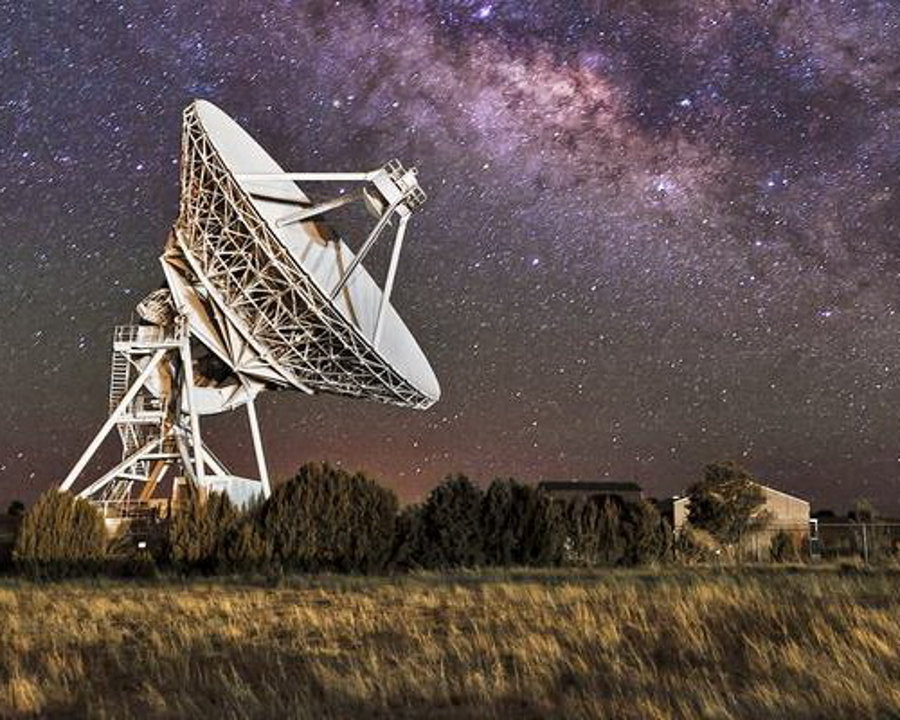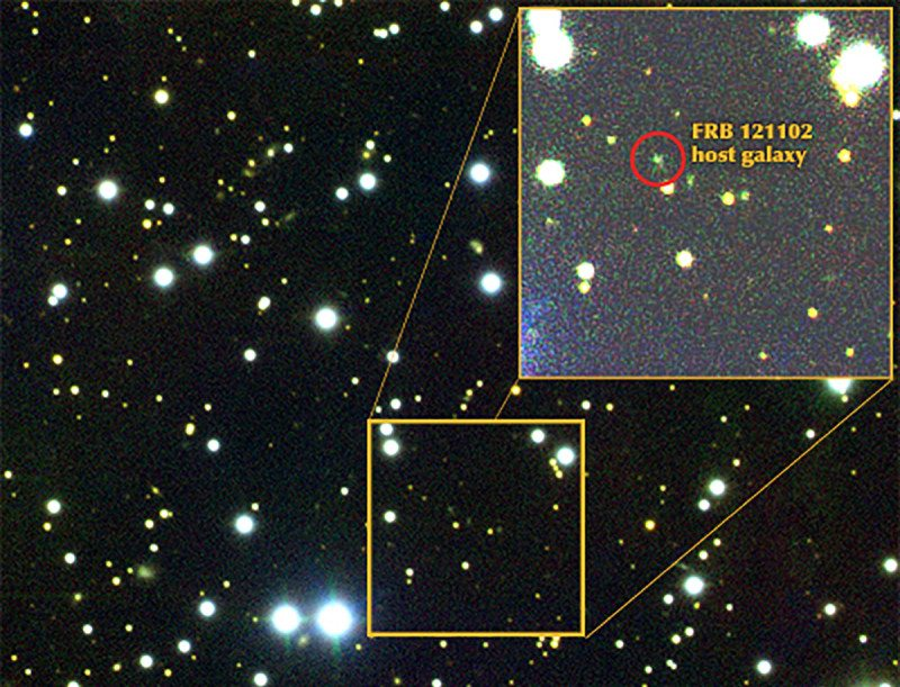A team of astronomers detected a group of 15 high-energy radio bursts coming from a distant galaxy. Researchers from Breakthrough Listen –a project searching for signs of extraterrestrial life in other galaxies—spotted the 15 Fast Radio Bursts (FRBs) from a galaxy located 3 billion light years away from Earth.
The signals were brief but powerful –as the pulses of radio waves appear in the sky for milliseconds before disappearing—and they came from the dwarf galaxy, according to the researchers. The source of the signal was dubbed FRB 121102.

More than 150 high-energy bursts have been observed coming from the dwarf galaxy ever since the pulses were discovered in 2007.
Breakthrough Listen researchers detect 15 FRBs coming from dwarf galaxy
On Saturday, the Breakthrough Listen project decided to focus on fast radio bursts source and turned the Green Bank Telescope in West Virginia towards the direction of FRB 121102. A study recently found the source emanates from a dim, dwarf galaxy located in the constellation Auriga.
In five hours, the telescope collected over 400 terabytes of data while monitoring the 4 to 8 gigahertz frequency. The astronomers then analyzed the data to search for signatures of the fast radio bursts. Overall, they found 15 FRBs, including one pulse at 7 gigahertz, which is a higher frequency than previously detected, according to a statement from the team.
The team notified the astronomy community about their discovery on Monday night by sending out an Astronomer’s Telegram, a tool for astronomers to post real time astronomical events.
“Bursts from this source have never been seen at this high a frequency,” said Andrew Siemion, director of the Berkeley Search for ExtraTerrestrial Intelligence (SETI) Research Center and part of the Breakthrough Listen project, according to the statement.
The researchers say there are several possible explanations for the radio signals, such as outbursts from rotating neutron stars with strong magnetic fields –known as magnetars—or that the FRBs are directed energy sources or “powerful laser bursts used by extraterrestrial civilizations to power spacecraft.” That hypothesis is akin to Breakthrough Starshot’s plan, which involves using powerful laser pulses to proper nano-spacecraft to our solar system’s nearest star, called Proxima Centauri.
Radio burst signals coming from dwarf galaxies have been detected several times
The astronomers say their colleagues around the world are now trying to understand the mechanism generating FRBs, and they have turned their telescopes and instruments towards FRB 121102.

“As well as confirming that the source is in a newly active state, the high resolution of the data obtained by the Listen instrument will allow measurement of the properties of these mysterious bursts at a higher precision than ever possible before,” Breakthrough Listen postdoctoral researchers Vishal Gajjar, who discovered the increased activity, said in the statement.
Fast radio bursts were first discovered with the Parkes Telescope in Australia but now are spotted every once in a while with radio telescopes around the world. FRB 121102 was first detected on November 2, 2012, and it became the first fast radio burst to repeat activity in 2015.
Steve Croft, a Breakthrough Listen astronomer at UC Berkeley, said that regardless of FRB 121102’s ultimate source when the fast radio bursts left their host dwarf galaxy, our solar system was less than 2 billion years old. At that time, life on Earth was mainly single-celled organisms.
Furthermore, scientists noted that even if the signals were caused by aliens or alien activity, the radio bursts were sent out 3 billion years ago and that extraterrestrial life could be long gone by now.
FRB 121102 will allow astronomers to understand fast radio bursts better
The new FRB frequency could help researchers understand the sources of the mysterious bursts and could allow for signals to be easier to detect.
“Previously we thought there wasn’t much emission at high or low frequencies, but now it looks like there is,” Harvard astrophysicist Avi Loeb told New Scientist. “It’s twice as high as the typical frequency that was previously claimed for this repeater.”
Seth Shostak, a senior astronomer at the SETI Institute, told GeekWire that the repeating nature of FRB 121102 has made it easier to study the radio bursts, but could complicate the situation because that particular FRB may differ from other sources.
Shostak explained the new data are likely to be helpful in figuring out what is happening with the signal, but it could also be possible that this particular object is a member of an “FRB sub species” and that it doesn’t behave as others FRBs.
“Kind of like hearing things growling in the night, eventually seeing one dog, and deducing that anything that growls is two feet high and has a wet nose,” noted Shostak.
Meanwhile, the Breakthrough Listen scientists said they would continue studying the odd frequency. Siemion said that even if the signal doesn’t turn out to be signatures of alien technology, the project will continue pushing the frontiers of “a new and rapidly growing area of our understanding of the universe around us.”
Source: Smithsonian
